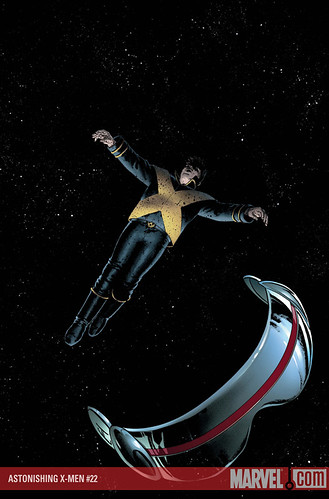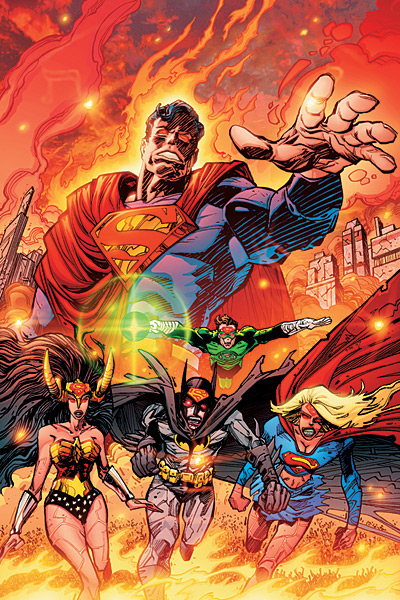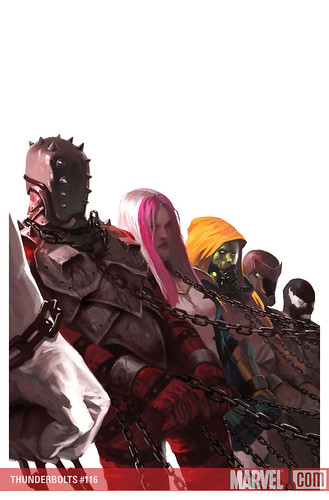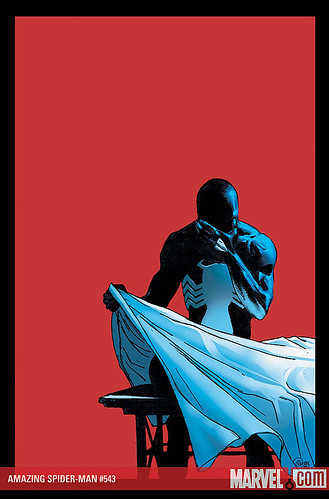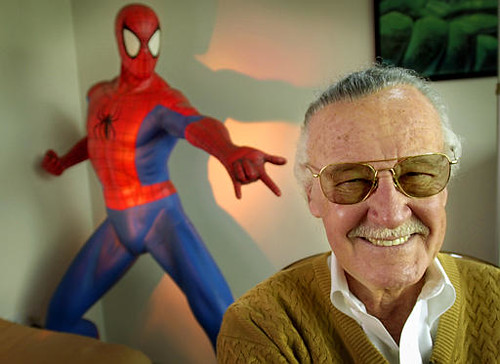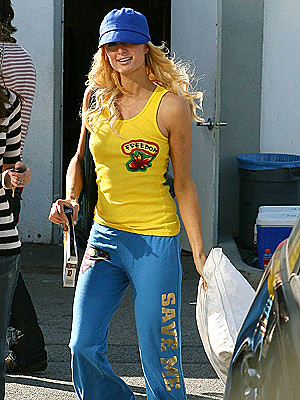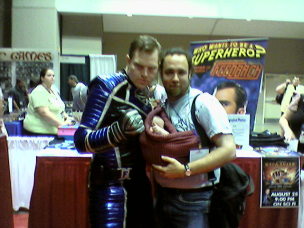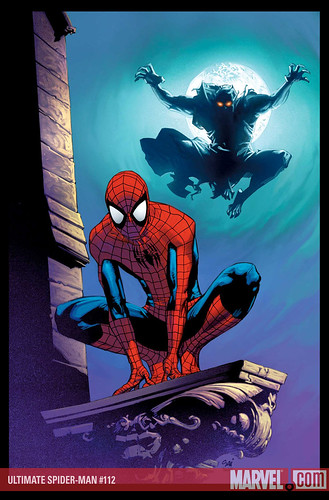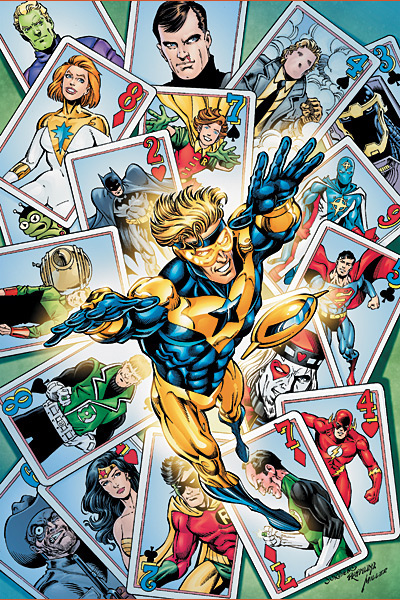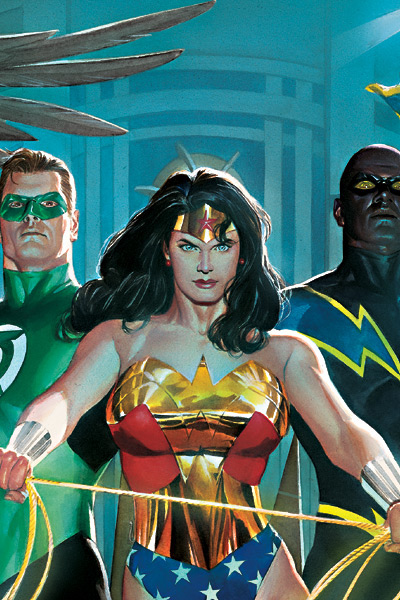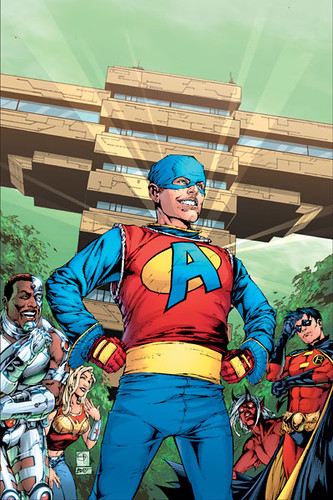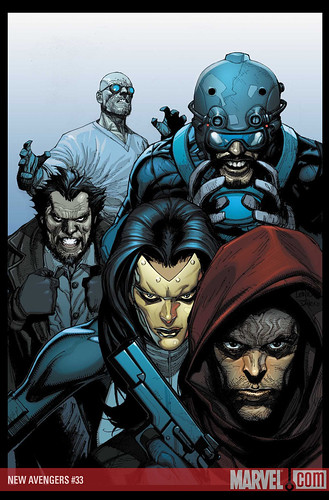A short-time ago we discussed the various pastiches of Superman overthe years. And while I stand by the statement I made there, that in many universes the World’s Greatest Superhero (tm) is a flying strongman in a cape, what is almost as interesting is that the second place character is usually a person with no superpowers at all.
Below you’ll find my take on the top ten non-superpowered superheroes. But before we get into this list deeply, there are going to be some notable absences, so let me explain them off the bat.
1) I didn’t include any sidekicks/spin-off heroes, no matter how noteworthy they are in their own right (though Nightwing really almost forced me to break this rule). This means we won’t see Robin, Speedy or Bucky on this list.
2) I also didn’t include superheroes who have superpowers, even if they proved themselves as heroes without their powers. So, despite the fact that Dinah Lance is just as competent a hero as Green Arrow, Huntress or Oracle without her sonic scream, she didn’t make the list. Neither did Storm.
3) “Borderline” superpowered heroes didn’t make the list either, even when it pained me to leave them off. As a result, you won’t see Hawkeye (who has superhumanly good eyesight), Moon Knight (who sometimes is written as having supernatural power due toKhonshu), or Wildcat (with his mystical nine lives) despite the fact that these characters are usually considered non-powered.
4) I didn’t include any primarily gun-wielding heroes. While many of the folks on this list do stretch my definition of a superhero in that they have killed, guns really serve no purpose other than “Make the other person dead.” I also think of soldiers and super-spies as a different breed than cape & mask heroes, so Nick Fury, the Punisher and any of the Old West supers didn’t make the cut for this list.
5) Finally, while most “normal human” superheroes do use high-tech gadgets of some sort, if they are entirely (or even mostly) dependent on a gadget for their superheroic acts, they didn’t make the list. WhileTony Stark and Hal Jordan may be ordinary humans, their equipment disqualifies them from this list. Sometimes this was a hard choice to make, and several of my favorite “normal human” heroes got cut as aresult (I’m looking at you, Blue Beetle and Night Thrasher).
But enough with the rules, let’s bring on the heroes!
 10) Nighthawk (Supreme Power, Marvel Comics)
10) Nighthawk (Supreme Power, Marvel Comics)Kyle Richmond watched his parents be cut down as a result of a racial-inspired hate crime. Using his father’s investments to build a successful corporation, Richmond has trained himself in martial arts and investigation to hunt down those who commit crimes against African-Americans as Nighthawk.
Why he made the cut: The original version of Nighthawk was little more than a copy of DC’s Batman, but the Supreme Power version of the character has enough differences to make him notable in his own right. Nighthawk has all the paranoia about superhumans that Batman does, but adds in a healthy issue of race-relation paranoia.
Why he’s number 10: As interesting as they’ve made him in
Supreme Power, it’s hard to ignore the fact that he is really an almost direct copy of someone much higher on this list.
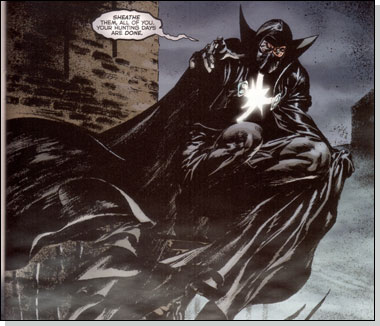 9) The Confessor II (Astro City, Wildstorm Comics)
9) The Confessor II (Astro City, Wildstorm Comics)Wearing an all black costume with a large white cross on his chest, the Confessor protects Astro City by night. The Confessor focuses on“ordinary” crime – and is the one stopping the city from being looted while Samaritan fights off the alien invasion.
Why he made the cut: The original Confessor was a Roman-Catholic priest turned vampire, whose costume was made in part to harm him enough thathe would avoid the temptation of drinking blood. He later recruited a sidekick – Altar Boy, who became the Confessor after the original gave his life fighting off an alien invasion. Altar Boy had no superpowers of his own, which makes the present Confessor more like the characters he emulated. Astro City features a number of other non-superpowered heroes, including the ever-lovable Crackerjack, but the Confessor has a more prominent position in the universe.
Why he’s number 9: As good as the former Altar Boy’s story is, the Confessor was far more interesting as a vampire. As a normal human, the new Confessor has a neat look, but really has little terribly original about him.
 8) Yeoman (Wild Cards novels)
8) Yeoman (Wild Cards novels)Daniel Brennan was a US Army Captain who made the enmity of a high-ranking traitor in the Army of the Republic of Vietnam. Framed for murder, Brennan fled the country. While in exile he studied Zen Archery and martial arts. He returned to the United States to track down his foe, ending up in New York City, the haven for Aces and Jokers. Having no superhuman powers, he nevertheless became well known as the Ace ofSpades killer and battled many superpowered Aces and Jokers, even helping end the Swarm invasion.
Why he made the cut: Yeoman is nearly unique in the Wild Cards universe in being a vigilante who wasn’t touched by the Wild Card virus. TheWild Cards novels are a deadlier place than most comics, making Brennan’s life that much harder.
Why he’s number 8: Firstly, Brennan is a killer – something he doesn’t hide from. It’s also impossible not to look at him and see a mesh of the Punisher and Green Arrow. As fascinating as I find him, he is more unique due to his setting than anything noteworthy about the character himself.
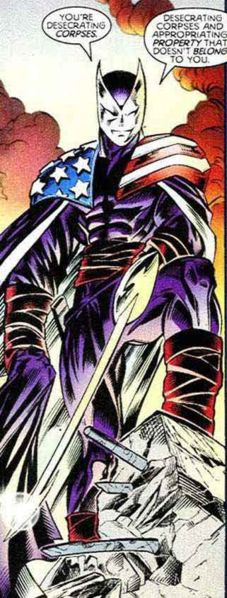 7) Citizen V/Baron Helmut Zemo (Thunderbolts, Marvel Comics)
7) Citizen V/Baron Helmut Zemo (Thunderbolts, Marvel Comics)The original leader of the Thunderbolts, Baron Zemo masqueraded as Citizen V. Using high technology, martial arts, sword-fighting skills, and a natural sense of leadership, Citizen V was the perfect disguise– invoking the memory of Captain America without copying him.
Why he made the cut: It took him longer than the rest of the Thunderbolts, but Zemo did eventually evolve into a hero. His look was astounding, and fit well with the idea of a normal human leading a team of superheroes – something which was the case with most teams of Avengers. What was even more interesting, to my way of thinking, was that it took banishment from earth for Zemo to begin to be a hero. Since then, he has ruled the world, given up god-like power, been betrayed, and allowed all of it to happen. Zemo’s evolution remains fascinating, and I can’t wait to see what happens next to Helmut.
Why he’s number 7: Zemo pushes against most of the rules of this list, honestly. While he may be one of my favorites, and I might even have made a Citizen V costume one summer, he is a former villain, and may in fact still be one now. He has killed, and will probably do so again. He also was the possessor of not one, but two Moonstones, pushing him in the "had superpowers" category. They didn’t define him, the way that Iron Man’s armor or Green Lantern’s power ring do, but it pushed the borders of how I defined this list. So, despite my intense love of the character, I really couldn't justify putting him any higher on the list.
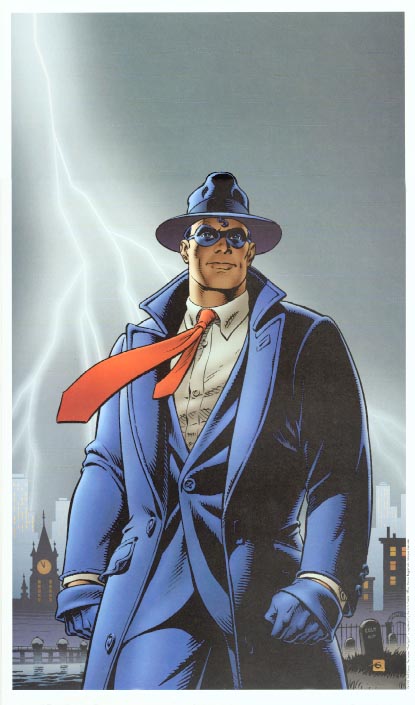 6) The Spirit (Will Eisner, now DC Comics)
6) The Spirit (Will Eisner, now DC Comics)Denny Colt, with the blessing of the police commissioner (an old friend), fights crime as the masked hero – the Spirit. The Spirit’s adventures ranged from noir detective work, to horror stories, to comedy– sometimes more than once in a single issue. With no superhuman powers, the Spirit is nonetheless a competent hand-to-hand fighter and detective.
Why he made the cut: The Spirit paved the way for the non-powered detective/martial artist we’ve come to see so often in comic books. On top of that, he was created by Wil Eisner – which in and of itself makes him notable.
Why he’s number 6: Despite the legacy the Spirit can claim, it doesn’t change the fact that to the layperson, he’s barely known. It hurt to put characters whose origins can be traced directly to him higher on the list, but the Spirit just isn’t well-enough known to the public to justify putting him higher. With a movie coming out, and a regular series of comics through DC, that may change, but for now, he leads the back of the pack.
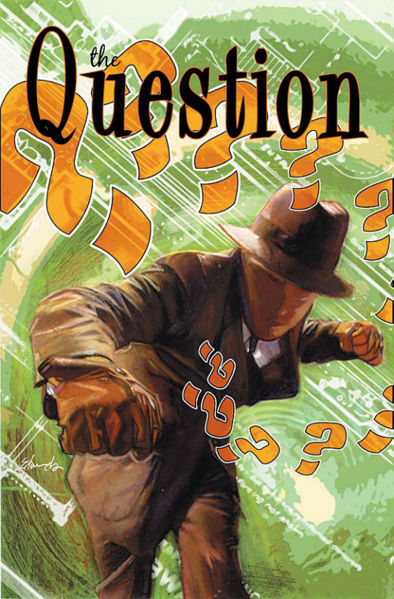 5) The Question (DC Comics)
5) The Question (DC Comics)Charles Victor Szasz was trained by Richard Dragon, the greatest martial artist in the DCU in martial arts and philosophy. An investigative reporter by day, he uses his identity as the Question to resolve problems that “Vic Sage” can’t touch. After Vic succumbed to cancer, former Gotham Detective Renee Montoya takes up the mantle of the Question.
Why he/she made the cut: There are a few reasons that the Question stands out among the detective/martial artists who inhabit comics. One is their distinct look – there is something massively unsettling about the appearance of a person with no face. The Vic Sage Question also had a rather memorable run on
Justice League: Unlimited, which has helped bring the character to the mind of many. He was always a favorite of mine, but the
JLU appearance did a lot to strengthen that. And being voiced by Jeffery Combs did nothing to hurt either. Their appearances in
52 and
Countdown have also brought the Questions to the forefront of the DCU. The Question is also the basis for Rorschach from
Watchmen, who is one of the most endearing sociopathic heroes in all of comics.
Why they’re number 5: The Question is one of my all-time favorite heroes, but even with the recent surge of attention, they are still second or third-tier characters. That might change a bit with Renee Montoya, especially with her relationship with Batwoman, but at the moment the Question remains in the middle of the pack.
 4) The Green Hornet (Various)
4) The Green Hornet (Various)Newspaper publisher Britt Reid, grand-nephew to the Lone Ranger, masquerades as the Green Hornet – a vigilante who is considered a crime boss by police and criminals alike. This deception allows Reid to discover much about his enemies. Armed with this knowledge, his loyal companion Kato, and the amazing Black Beauty, the Green Hornet is a threat to criminals everywhere.
Why he made the cut: The Green Hornet loaned so much of his mythology to future heroes that it really is remarkable. But what is even more amazing is how much remains unique to him – not the least of which being his status as crime boss. (Marvel’s Shroud doesn’t do it half as well.) His gadgets are second to none, and he even has a memorable bit of theme music – even if it was written by Rimsky-Korsakov.
Why he’s number 4: It is absolutely no knock against the Hornet himself that he only made it to number four on the list. It really comes down to the fact that the three people ahead of him on the list are just that much more notable. Starting with one who has stolen his color…
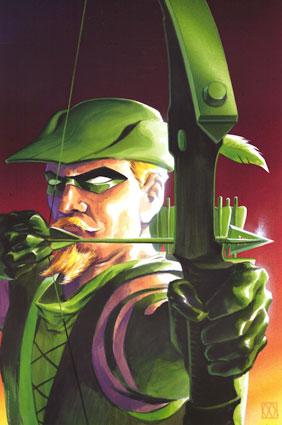 3) Green Arrow (DC Comics)
3) Green Arrow (DC Comics)Millionaire playboy Olliver Queen was stranded on a desert island by a crime boss. His own survival instinct plus a lifelong fascination with archery saved him from a grisly fate, and when he returned to civilization, he decided to use his new identity to protect the “little guy” as the Emerald Archer, Green Arrow.
Why he made the cut: Green Arrow is one of the more notable “normal human” heroes in comics today, and his fame is only growing. In addition to comics and cartoons, Green Arrow has also been included in the
Smallville mythology, and is even going to have a movie made about him (probably). Though he started as a Batman knock-off, he has grown to be a champion of liberal causes, and has started the legacy for numerous other heroes, including the current Speedy, Mia Derden and the former Speedy, RoyHarper, who is now a member of the Justice League as Red Arrow. He has also developed a rivalry with Deathstroke – the single deadliest assassin in the DCU. And on top of all that, he just proposed to theBlack Canary, Dinah Lance.
Why he’s number 3: As amazing as Ollie is, and how rapid his ascent has been, he still remains just out of reach of the top-tier of superheroes. To comic fans, few characters are as beloved as Olliver Queen is today, but he still lacks the name recognition of Spider-Man, Superman or the top two spots on this list.
 2) Batman (DC Comics)
2) Batman (DC Comics)His parents gunned down at a young age, Bruce Wayne swore that he would never allow what happened to him to happen to anyone else. Heir to a vast empire of wealth, Bruce travelled across the world, honing his mind and body to become the ultimate weapon against crime. Already a brilliant detective, martial artist, tactician and scientist, Bruce crafted a disguise to strike terror into the hearts of criminals. He has had many allies in this war against crime, but deep inside, Bruce remains a loner. Still, no hero is as feared as the Batman is.
Why he made the cut: Because he’s the Batman, that’s why. Few superheroes have the recognition as an icon that he does. Bruce Wayne represents the ultimate in what a human can strive for, and is one ofthe “Big Three” of the DCU. Batman has out fought everyone, and has contingency plan after contingency plan for future battles. He has trained several Robins, one of whom, Dick Grayson. has become such an important hero in DC Comics that he honestly deserves a place on this list himself. He has inspired numerous other heroes, including the Huntress and two different Batgirls. His arsenal is nearly as well known as his origin story, and he has been the subject of more movies and television shows than any other superhero. No list of “human” superheroes would be complete without him.
Why he’s number 2: This will be probably the most contentious placement on this list, because for many Batman is what people think of as
the non-powered superhero. I struggled between placing him in the number one or number two slot, and ultimately went with who I chose as the winner because of what that character represents. Batman is, at heart, a story about vengeance. Bruce’s mission has grown beyond that, but that’s where its’ roots are. Batman also inspires fear above anything else, and I wanted the number one position to belong to a hero who inspires hope in all those around him, even after his death.
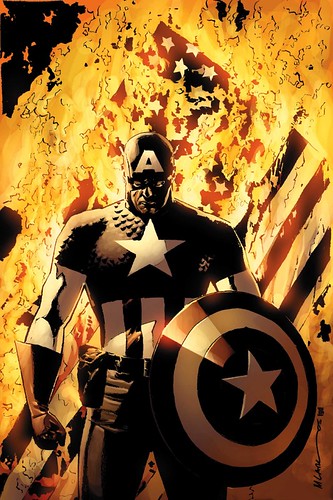 1) Captain America (Marvel Comics)
1) Captain America (Marvel Comics)Despite being a patriot, Steve Rogers was deemed unfit for duty during the Second World War due to his scrawny physique. Offered an opportunity to take part in a secret Super-Soldier program, Steve Rogers was transformed to the peak of human ability and trained by the army. Armed with an unbreakable shield, and possessing unmatched leadership and tactical skills, Steve became Captain America. Frozen in ice for years and released in the modern day, Captain America is still regarded by nearly all in the Marvel Universe as the ultimate expression of what a hero should be, even as he struggles to find his place in modern-day America.
Why he made the cut: In the Marvel Universe, no one is a greater hero than Cap. Cap has led several incarnations of the Avengers, leading gods, mutants, aliens and robots despite having no powers of his own. He has stood toe-to-toe with the likes of the Hulk, Thanos and Ultron, and come out on top. His sidekicks have become potent heroes in their own right, and other nations have champions who are clearly inspired by Captain America, such as Union Jack and the Red Guardian.
Why he’s number 1: Cap isn’t just an unpowered superhero, he is a leader of superheroes. Cap inspires hope and loyalty in those around him and is one of the few who are worthy of wielding Thor’s enchanted hammer, Mjolnir. No matter how jaded or bitter a hero is, when they work alongside Cap, even the likes of Wolverine, Spider-Man and Luke Cage find ways to be members of a team. When Captain America opposed the Registration Act, he gave legitimacy to the cause. Without Cap, those who refused to register would have been despised by all. But with Captain America leading the resistance, it made people think about
why heroes might oppose the law, even in the wake of Stamford. After being assassinated, Steve Rogers has continued to inspire heroism in his memory. He may not be as well known as Batman, and may have even lost to him in
Marvel vs. DC several years ago, but Captain America is
the single largest symbol of hope to the Marvel Universe, and for that reason, he is my pick for number one.
So, what do you think? Who do you think deserves a place on this list but didn’t get one? Where would you have moved people around on the list? I’d love to hear.
Labels: Astro City, Batman, Captain America, Citizen V, Green Arrow, Green Hornet, Nighthawk, Supreme Power, the Question, the Spirit, Thunderbolts, Wild Cards, Yeoman
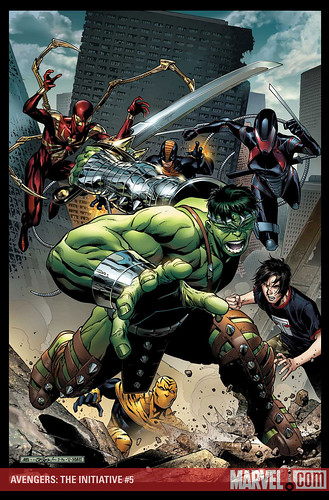 Avengers: The Initiative 5
Avengers: The Initiative 5 Countdown 35
Countdown 35 World War Hulk/X-Men 3
World War Hulk/X-Men 3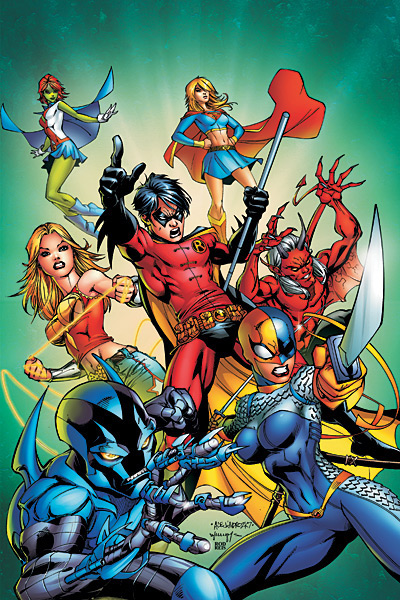 Teen Titans 50
Teen Titans 50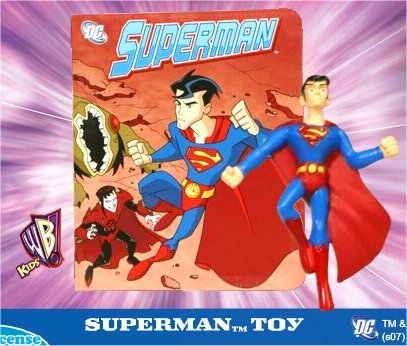

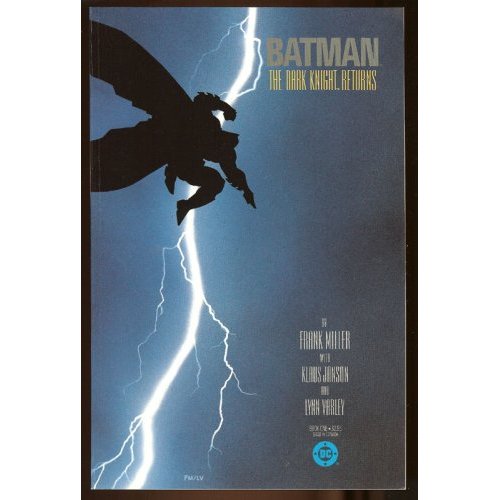


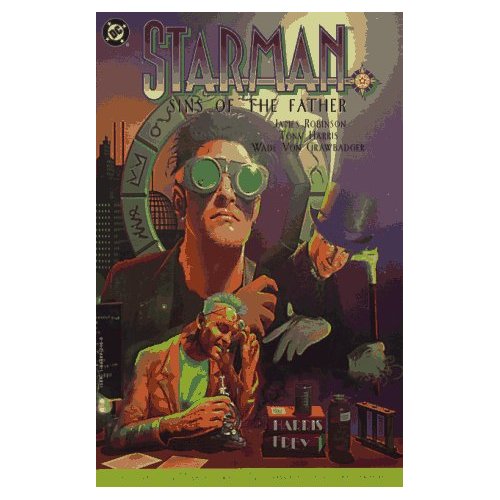
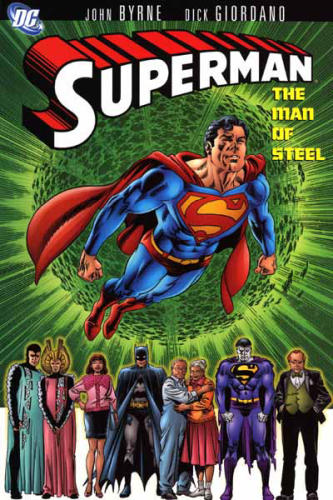

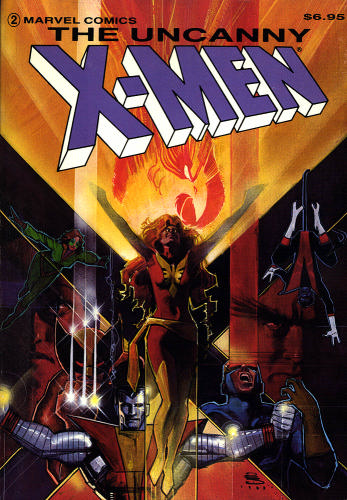

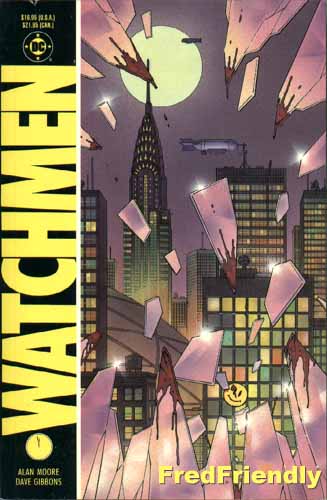
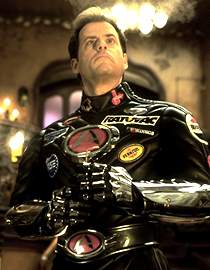











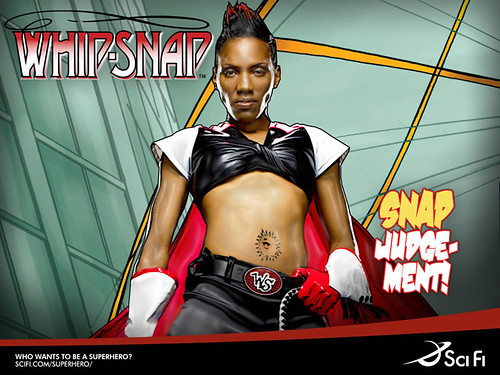 "The person leaving the lair tonight is... Whip-snap."
"The person leaving the lair tonight is... Whip-snap."